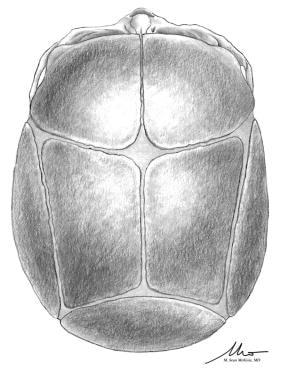Background
Craniosynostosis occurs in approximately 1 in 2000 live births. The term craniosynostosis refers to premature closure of one or more of the cranial vault sutures—namely, the metopic, sagittal, coronal, and lambdoid sutures.
(See the image below.)
Normal anatomic suture configuration.
Premature closure of a suture leads to characteristic changes in the shape of the skull, which relate not only to the reduced growth at the fused suture but also to the compensatory growth at adjacent open sutures. The resultant deformity is often observable in the neonatal period, but milder forms may not be immediately apparent. Most cases of craniosynostosis involve a single suture, occur sporadically without a prior family history of craniosynostosis, and are not associated with other physical abnormalities (ie, are nonsyndromic).
There are several options for treatment, ranging from removal of the closed suture (suturectomy) to reconstruction of the cranial vault. Each of these options has inherent advantages and disadvantages. The focus of this article is on options for cranial vault reconstruction of the more common nonsyndromic single-suture craniosynostoses (SSCs).

